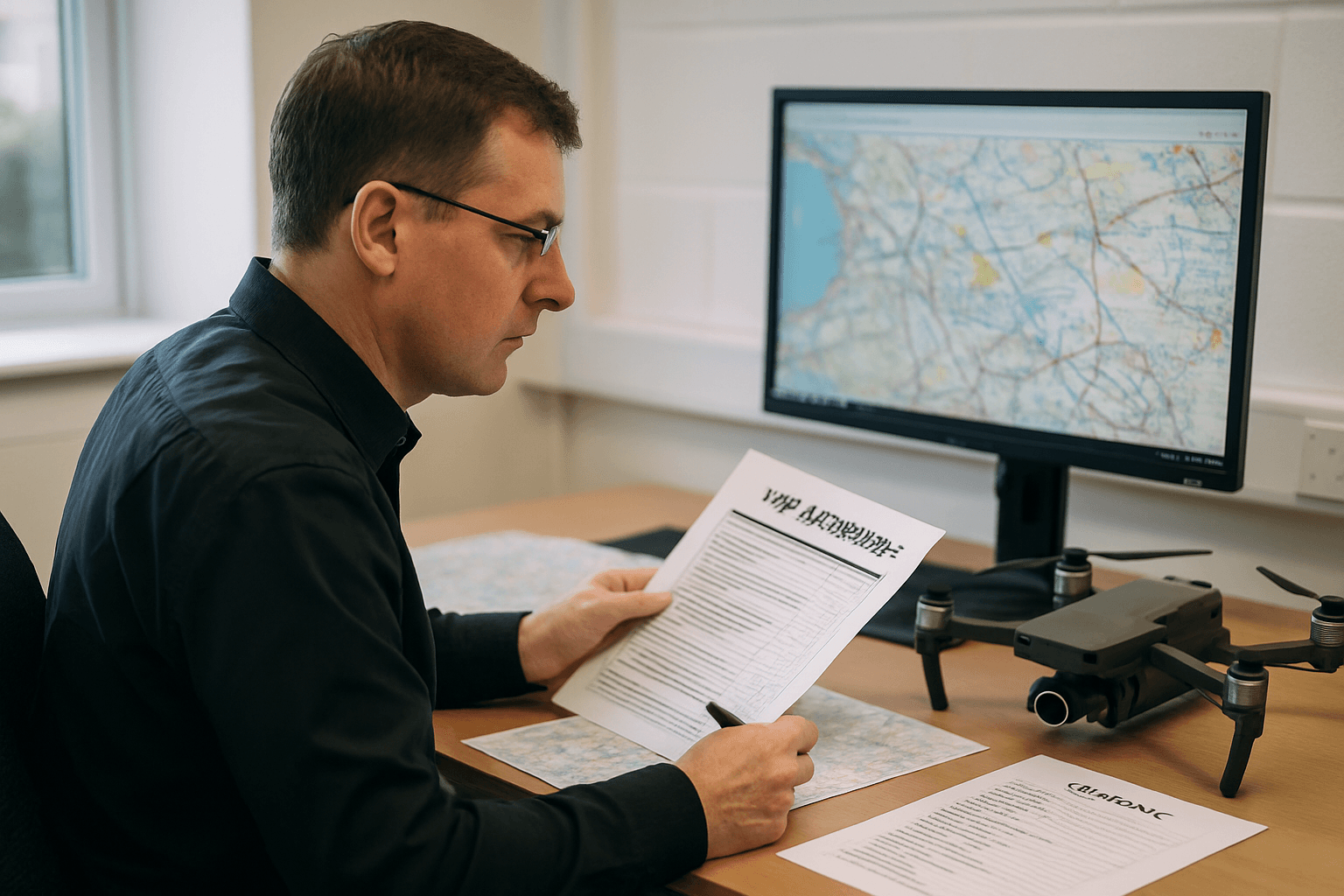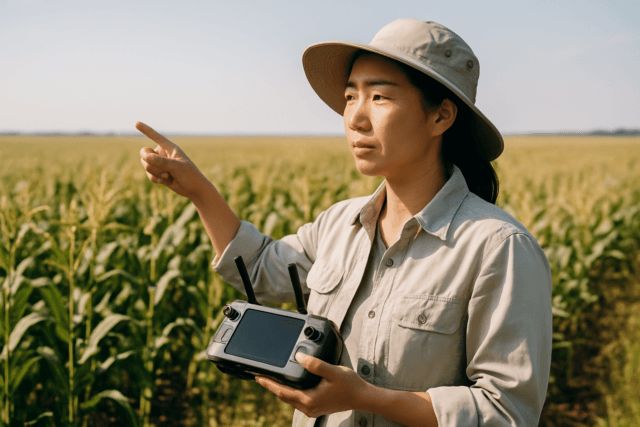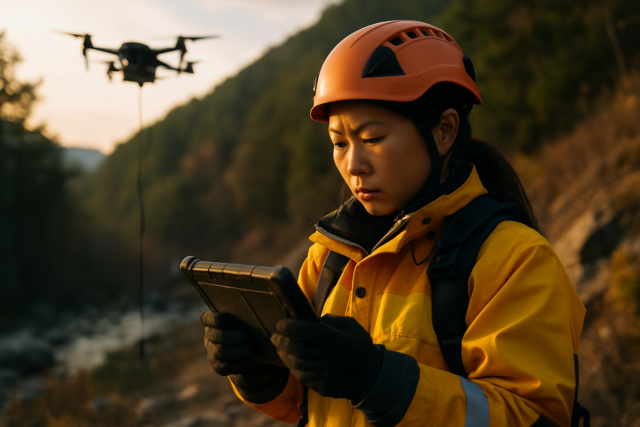Drones have revolutionised various industries, offering unparalleled aerial perspectives and capabilities. However, with increased drone usage comes the responsibility of ensuring safe operations. In the UK, conducting a thorough drone risk assessment is paramount for both recreational and commercial operators. This article delves into the intricacies of drone risk assessments in the UK, covering legal requirements, methodologies, and best practices to help you navigate the skies safely and responsibly.
Understanding the Basics of Drone Risk Assessments
A drone risk assessment is a systematic process of identifying potential hazards associated with drone operations and implementing control measures to mitigate those risks. It’s a crucial step in ensuring the safety of people, property, and other airspace users.
Why are Risk Assessments Important?
- Legal Compliance: In the UK, the Civil Aviation Authority (CAA) mandates risk assessments for commercial drone operations and encourages them for recreational flying.
- Safety: Risk assessments help identify potential dangers and implement safeguards to prevent accidents and incidents.
- Operational Efficiency: By anticipating potential problems, risk assessments can contribute to smoother, more efficient drone operations.
- Insurance: Many drone insurance providers require evidence of risk assessments before providing coverage.
- Public Perception: Demonstrating a commitment to safety through risk assessments can improve public trust in drone technology.
Legal and Regulatory Framework in the UK
The CAA is the governing body responsible for regulating drone operations in the UK. Key regulations and guidelines include:
- Air Navigation Order: This legislation outlines the general rules and regulations for all aircraft, including drones, operating in UK airspace.
- CAP 722: This document provides detailed guidance on the safe operation of drones, including risk assessment methodologies.
- UK Specific Operations Risk Assessment (SORA): The CAA launched UK SORA in April 2025, an online digital risk assessment system designed to enhance the safety and efficiency of unmanned aircraft operations. It aims to provide a more transparent and consistent approach to risk assessments for UAS operators, making it easier and quicker for operators to gain approvals.
Operational Authorisation and Operating Safety Cases
Most drone operators in the UK operate under a standard Operational Authorisation (OA) based on predefined risk assessments. However, for more complex or higher-risk operations, an Operating Safety Case (OSC) is required. An OSC demonstrates to the CAA that you can safely manage risks beyond the standard permissions. Operations that may require an OSC include:
- Flying closer to people or infrastructure than normally allowed.
- Operating Beyond Visual Line of Sight (BVLOS).
- Using a larger drone for commercial operations.
Key Elements of a Drone Risk Assessment
A comprehensive drone risk assessment should include the following elements:
- Hazard Identification: Identify potential hazards associated with the proposed drone operation.
- Risk Assessment: Analyze the likelihood and severity of each hazard to determine the overall risk level.
- Control Measures: Implement appropriate control measures to mitigate the identified risks.
- Documentation: Record the risk assessment process, including identified hazards, risks, and control measures.
- Review and Revision: Regularly review and revise the risk assessment to ensure it remains up-to-date and effective.
1. Hazard Identification
This involves identifying potential sources of harm associated with the drone operation. Common hazards include:
- Equipment Failure: Malfunctions of the drone, remote control, or other equipment.
- Loss of Control: Unintentional loss of control due to technical issues, environmental factors, or pilot error.
- Collision: Collision with other aircraft, buildings, people, or objects.
- Environmental Factors: Adverse weather conditions such as high winds, rain, or extreme temperatures.
- Electromagnetic Interference: Interference with the drone’s communication or navigation systems.
- Privacy Violations: Unauthorized collection or dissemination of personal data.
- Security Risks: Potential for the drone to be used for illegal activities.
2. Risk Assessment
Once hazards have been identified, the next step is to assess the risk associated with each hazard. This involves evaluating the likelihood of the hazard occurring and the severity of the potential consequences.
- Likelihood: The probability that the hazard will occur (e.g., rare, unlikely, possible, likely, almost certain).
- Severity: The potential impact of the hazard if it occurs (e.g., minor, moderate, serious, catastrophic).
The overall risk level can then be determined using a risk matrix, which combines likelihood and severity to assign a risk rating (e.g., low, medium, high).
3. Control Measures
Control measures are actions taken to reduce the likelihood or severity of the identified risks. Common control measures include:
- Pre-Flight Checks: Thorough inspection of the drone and equipment before each flight.
- Pilot Training: Ensuring that pilots are properly trained and competent to operate the drone safely.
- Flight Planning: Careful planning of the flight path, altitude, and operating area.
- Weather Monitoring: Monitoring weather conditions and avoiding flights in adverse weather.
- Geofencing: Using software to create virtual boundaries that prevent the drone from flying into restricted areas.
- Visual Observers: Using visual observers to assist the pilot in maintaining situational awareness.
- Emergency Procedures: Developing and practicing emergency procedures for dealing with equipment failures or other incidents.
- Privacy Protocols: Implementing protocols to protect personal data and prevent privacy violations.
- Insurance: Obtaining adequate insurance coverage to protect against potential liabilities.
- Safety Briefings: Providing safety briefings to all personnel involved in the drone operation.
- Use of propeller guards: Fixing propeller guards to drones.
- Erecting temporary cordons: Erecting temporary cordons around launch sites using traffic cones or extendable barrier poles.
4. Documentation
It is essential to document the entire risk assessment process, including:
- Identified hazards.
- Risk assessment results (likelihood, severity, risk level).
- Implemented control measures.
- Names and signatures of individuals involved in the risk assessment.
- Date of the risk assessment.
This documentation serves as evidence of your commitment to safety and can be used to demonstrate compliance with regulatory requirements.
5. Review and Revision
Risk assessments should be regularly reviewed and revised to ensure they remain up-to-date and effective. This is particularly important if there are changes to the drone operation, such as:
- Changes in the operating environment.
- Changes in equipment or procedures.
- New regulations or guidelines.
- Occurrence of accidents or incidents.
Practical Steps for Conducting a Drone Risk Assessment
- Define the Scope: Clearly define the scope of the risk assessment, including the specific drone operation, location, and timeframe.
- Assemble a Team: Involve relevant personnel in the risk assessment process, such as pilots, ground crew, and safety officers.
- Gather Information: Collect all relevant information about the drone operation, including equipment specifications, operating procedures, and environmental conditions.
- Identify Hazards: Use brainstorming, checklists, and other techniques to identify potential hazards.
- Assess Risks: Evaluate the likelihood and severity of each hazard and assign a risk level.
- Develop Control Measures: Develop and implement appropriate control measures to mitigate the identified risks.
- Document the Risk Assessment: Record the entire risk assessment process, including identified hazards, risks, and control measures.
- Communicate the Results: Communicate the results of the risk assessment to all personnel involved in the drone operation.
- Review and Revise: Regularly review and revise the risk assessment to ensure it remains up-to-date and effective.
Resources and Templates
Several resources and templates are available to assist drone operators in conducting risk assessments:
- CAA Guidance Materials: The CAA provides various guidance materials on drone safety and risk assessment, including CAP 722.
- Online Risk Assessment Tools: Several online tools can help you conduct and document your risk assessments.
- Templates: Many websites offer free or paid drone risk assessment templates that can be customized for your specific operations.
Insurance Considerations
While a thorough risk assessment can significantly reduce the likelihood of accidents, it’s also essential to have adequate insurance coverage. Drone insurance can protect you against potential liabilities for damage or injury caused by your drone.
- Public Liability Insurance: This covers you in the event that your drone causes damage to another person’s property or injures a member of the public. In the UK, commercial drone operators are legally required to have public liability insurance.
- Personal Accident Insurance: This covers you in case you injure yourself whilst out flying.
Case Studies
- CloudVisual: This drone company holds a specific category exemption (Operational Safety Case) to allow for flying within built-up areas that are not permitted for general drone operators. With their OSC, they can work in some of the busiest areas of London, legally and with safety assurances in place.
- Consortiq: This company helps drone operators create robust OSCs to ensure safe and compliant drone operations.
The Future of Drone Risk Assessments
The field of drone risk assessment is constantly evolving as technology advances and regulations change. Some emerging trends include:
- Increased Automation: Automated risk assessment tools that use data analytics and machine learning to identify and assess risks.
- Remote Identification: Remote identification technology that allows drones to be identified and tracked in real-time.
- Enhanced Geofencing: More sophisticated geofencing systems that can dynamically adjust to changing airspace conditions.
- Standardization: Greater standardization of risk assessment methodologies across different countries and regions.
Conclusion
Drone risk assessments are an essential component of safe and responsible drone operations in the UK. By understanding the legal requirements, methodologies, and best practices outlined in this article, drone operators can minimize risks, protect the public, and contribute to the continued growth and innovation of the drone industry. As the technology evolves and regulations adapt, staying informed and proactive in your approach to risk assessment will be key to navigating the skies safely and responsibly.





